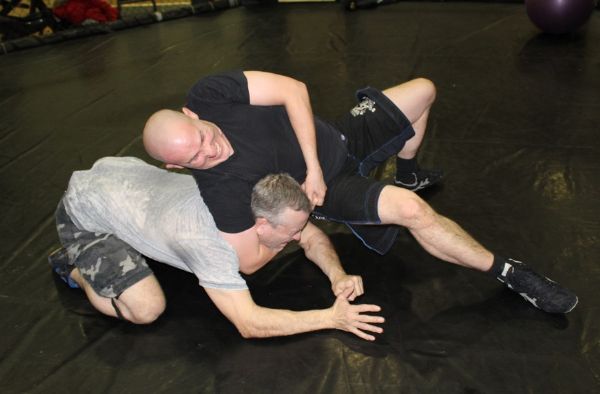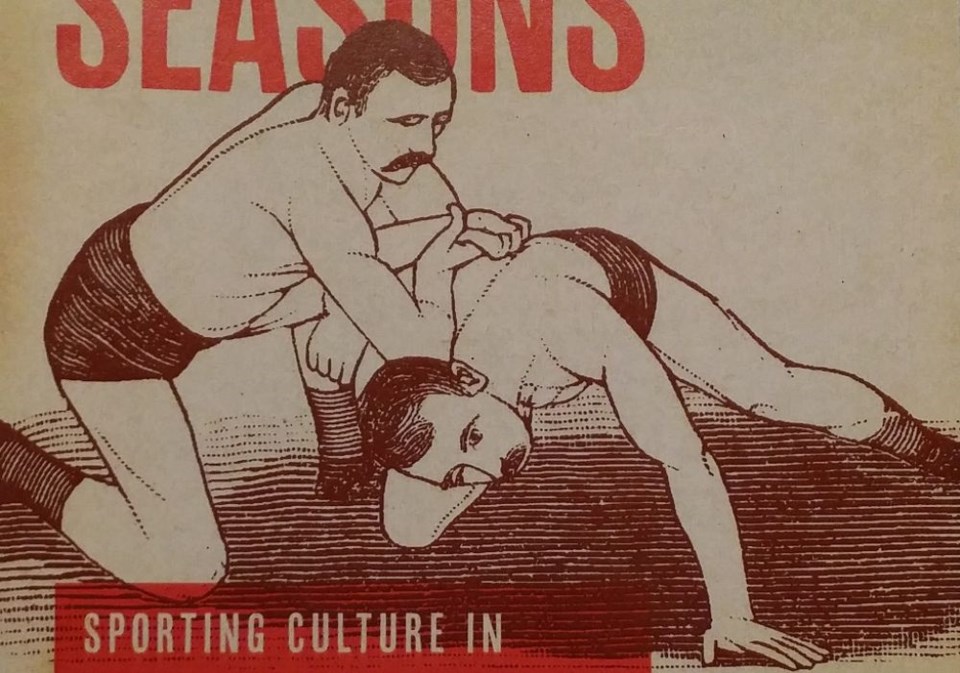Despite the ongoing exchange of challenges in the daily newspaper, the wrestling match between Fred Plaisted and F.H. Joslin would never happen.
The scheduling of that contest was canceled after an unknown assailant attacked, and seriously injured, Plaisted with a frozen goose.
This was not a scripted event. This was the stranger-than-fiction ending to an 1893 rivalry between two Manitoban wrestlers.
Stories of yesterday’s professional wrestling had no shortage of personality.
Wrestlers of the past – from the late eighteenth century through the Great Depression – didn’t adopt the larger-than-life alter egos and theatrics that the modern day sports entertainers do. That, however, in no way means the wrestling lacked flair.
Men met in rings that oftentimes featured canvass only slightly smoother than coarse sandpaper. There, they would grapple in brutal matches that sometimes spanned more than two hours.
Enthusiastic spectators could enjoy a clean match, or become enraged by perceived incompetent officiating or even the suspicion of a fixed match.
 Newspaper challenges, suspected fakery and at least one assault with a frozen goose are just some of the colourful exploits explored by author C. Nathan Hatton in his latest book Thrashing Seasons: Sporting Culture in Manitoba and the Genesis of Prairie Wrestling.
Newspaper challenges, suspected fakery and at least one assault with a frozen goose are just some of the colourful exploits explored by author C. Nathan Hatton in his latest book Thrashing Seasons: Sporting Culture in Manitoba and the Genesis of Prairie Wrestling.
Hatton’s book, published by the University of Manitoba Press, digs deep not only into the personalities and athletes who shaped wrestling’s early years in Manitoba, but also closely examines wrestling as a social phenomenon that promoted debates surrounding respectability, race, class, ethnicity and even masculinity.
Hatton is a Lakehead University history professor and has written Thrashing Seasons on top of a mountain of research.
“I really tried to bridge the gap between academic writing and social history,” Hatton says.
“I wanted to underpin it with theory, meaning I’m not telling a story about wrestling per se but I’m telling a story about wrestling’s social significance and what wrestling meant to the larger community.”
Thrashing Seasons is academic writing at its core and Hatton’s exploration of how wrestling was shaped by the communities and times it was practiced in certainly gives a lot for the academic audience to digest.
Despite its academic backbone, Thrashing Seasons does have a writing and storytelling style that will also appeal to a broader readership.
“Wrestling is such a colourful topic with so many colourful situations and characters that you can’t neglect those stories,” Hatton adds.
Hatton says it’s important for him not to forget that the wrestlers who make up the characters of his book are real people who lived real lives. Their stories, however, have been largely forgotten by wrestling’s “historical narrative” and Hatton hopes Thrashing Seasons can change that.

Thrashing Seasons covers wrestling between 1700 and 1931 and covers styles ranging from catch-as-catch can to horseback wrestling.
While there is passing references to the wrestling scene on the Lakehead the book’s focus, as its title suggests, remains on the genesis of prairie wrestling.
Following an incredibly descriptive introduction that brings the reader to a specific match in April 1923 at Winnipeg’s Industrial Exhibition Building, Hatton takes a mostly chronological approach from chapter-to-chapter.
There’s much more to each chapter than the timeline itself. A chapter focused on the late Nineteenth Century to 1914 details a pro wrestling boom, while another chapter based in the same timeline examines ethnicity within the sport.
Meanwhile, a chapter examining 1914 takes a look at the rising tensions between amateur and professional sports along with the introduction of the military sporting movement.
“This particular period was one of tremendous social flux,” Hatton says in reference to the entire period the book covers. “This was the period of the opening up of the Wes.
“We see the growth of wrestling and the changes of wrestling at the same time we see massive changes in the West in terms of population changes, in terms of demographic changes, in terms of technological changes.
“My hope is that these two aspects of Canadian history are traced along parallel lines and wrestling is not treated atomistically from the social context in which it occurred.”
Thrashing Seasons: Sporting Culture in Manitoba and the Genesis of Prairie Wrestling is available for sale now. For more information visit the University of Manitoba Press online here.
Photo Credit: Secondary photogrpahs provided by Travis Duncan
